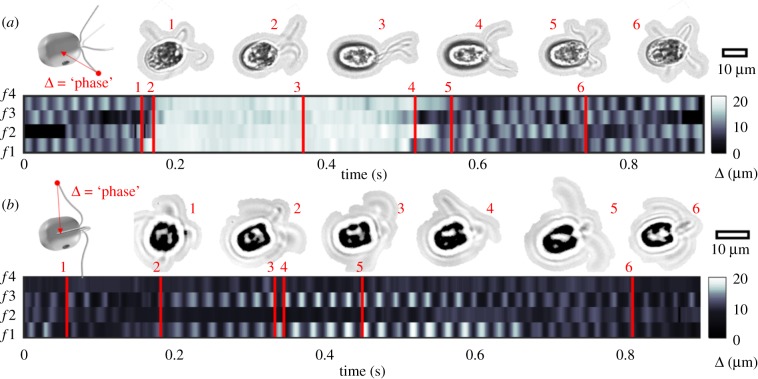Figure 3.
Quadriflagellate gaits resolved at the single-flagellum level in free-swimming cells. Displacement from tip to centre of the cell body was used as proxy for flagellar phase for each flagellum, labelled (f1–4). Frames corresponding to specific timepoints are highlighted. Scalebars for cell size reference. (a) Carteria crucifera has a galloping gait during forward runs, but exhibits noise-induced shocks involving reorientation of the flagella (time 3). Recovery of the original rhythm (phase-resetting), completed within four beat cycles. (b) Pyramimonas tychotreta has a canonical trotting gait during forward runs but exhibits partial activation of flagella. Beating is restricted to the pair f 1,3, but suppressed in f 2,4. Synchrony of f 1,3 drifts from antiphase (times 3,4) to in-phase (time 5) over the course of this recording (electronic supplementary material, videos S4 and S5).

